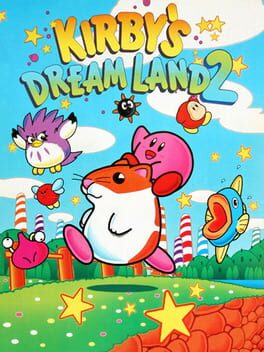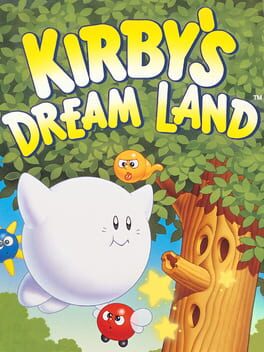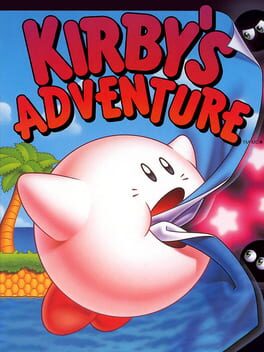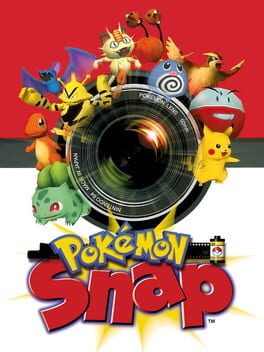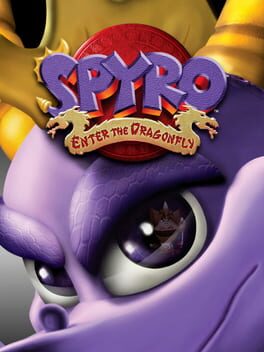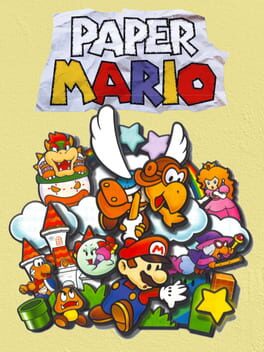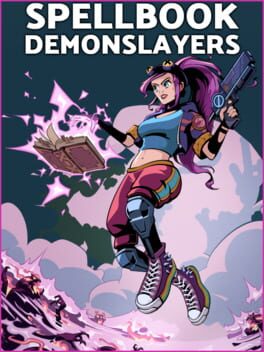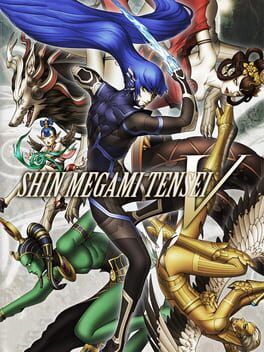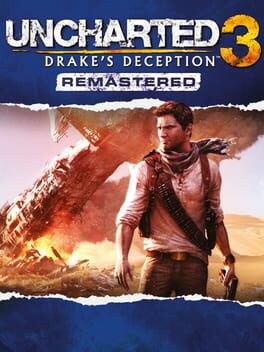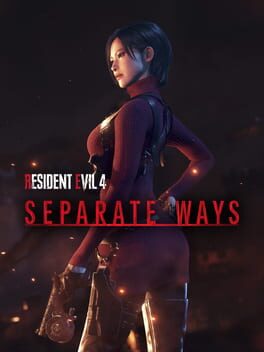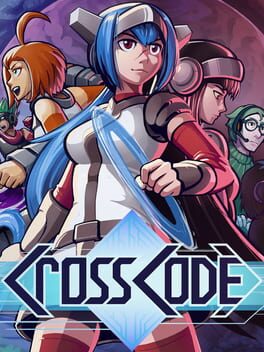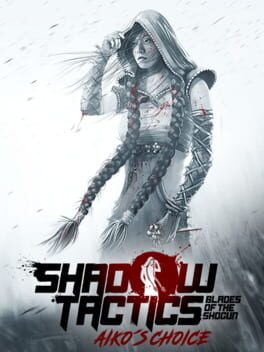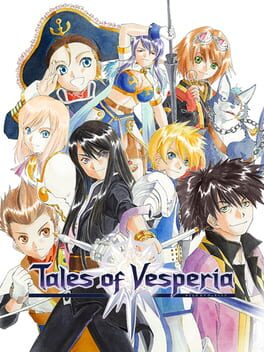ChaosXeloc
1995
Kirby's Dream Land 2 was a little... underwhelming, considering what had just come before it in Kirby's Adventure. Granted, it's back on the Game Boy, so I will cut it some slack there, but it just wasn't as enjoyable or finely tuned as either of the preceding Kirby games, to me.
In Dream Land 2, the amount of copy abilities has been cut down a bit from Kirby's Adventure. This is a bit disappointing, but not totally surprising. In their place are new Animal Buddies, each offering different forms of movement and altering your copy abilities in different ways. The idea of riding animals as Kirby never really appealed to me before, and I definitely stand by that opinion now that I've played with it. Some animal buddy combinations are so strong that they break the game (Owl + Parasol). It paints the rather monotonous level design as even more of a slog than it already was, forcing you to hear the same 1-3 animal tracks for most of the game instead of actual stage music.
Level design often only requires you to pay attention when it comes to auto-scrollers or Rainbow Drops. That said, I don't find the Rainbow Drops to be nearly as tedious of a collectible as others have suggested. It might take a couple guesses of the right ability and/or animal buddy, but I find that inoffensive at worst. World 6 was the only standout for me, requiring a guide after multiple failed attempts, but the rest felt fairly organic to solve. Auto-scrollers, by contrast, felt pretty indefensible. Especially the trial-and-error maze in 7-6. Most of World 7 felt pretty uninspired, truthfully.
All-in-all, Kirby's Dream Land 2 felt like it took an interesting concept (animal buddies), but utilized it in a series that wouldn't really take advantage of it. It didn't do short-and-sweet gameplay as well as Dream Land 1, and it could never handle the thoughtful stage design of Adventure. Certainly not a bad game, but not one I would ever recommend.
In Dream Land 2, the amount of copy abilities has been cut down a bit from Kirby's Adventure. This is a bit disappointing, but not totally surprising. In their place are new Animal Buddies, each offering different forms of movement and altering your copy abilities in different ways. The idea of riding animals as Kirby never really appealed to me before, and I definitely stand by that opinion now that I've played with it. Some animal buddy combinations are so strong that they break the game (Owl + Parasol). It paints the rather monotonous level design as even more of a slog than it already was, forcing you to hear the same 1-3 animal tracks for most of the game instead of actual stage music.
Level design often only requires you to pay attention when it comes to auto-scrollers or Rainbow Drops. That said, I don't find the Rainbow Drops to be nearly as tedious of a collectible as others have suggested. It might take a couple guesses of the right ability and/or animal buddy, but I find that inoffensive at worst. World 6 was the only standout for me, requiring a guide after multiple failed attempts, but the rest felt fairly organic to solve. Auto-scrollers, by contrast, felt pretty indefensible. Especially the trial-and-error maze in 7-6. Most of World 7 felt pretty uninspired, truthfully.
All-in-all, Kirby's Dream Land 2 felt like it took an interesting concept (animal buddies), but utilized it in a series that wouldn't really take advantage of it. It didn't do short-and-sweet gameplay as well as Dream Land 1, and it could never handle the thoughtful stage design of Adventure. Certainly not a bad game, but not one I would ever recommend.
1992
Kirby's Dream Land is a pretty alright experience. I'm surprised that it's the first Kirby game and not the second, given that it feels like a simplified spin-off, sort of like Super Mario Land.
You control Kirby, who can Inhale enemies to spit them back out, and Float endlessly over terrain, but not much else. Kirby didn't debut with his iconic Copy ability, so the controls are quite simple. Added to that, there are only 5 levels, so the whole experience takes less than an hour to finish the first time around.
With all that said, there's not much to complain about here. It's a simple game, and it does well for what it is. But it doesn't light my world on fire, and I wouldn't have been asking for a sequel if I didn't know what other plans they had for Kirby in the future.
You control Kirby, who can Inhale enemies to spit them back out, and Float endlessly over terrain, but not much else. Kirby didn't debut with his iconic Copy ability, so the controls are quite simple. Added to that, there are only 5 levels, so the whole experience takes less than an hour to finish the first time around.
With all that said, there's not much to complain about here. It's a simple game, and it does well for what it is. But it doesn't light my world on fire, and I wouldn't have been asking for a sequel if I didn't know what other plans they had for Kirby in the future.
1993
Honestly, I was blown away when I realized this game was an NES title. The graphics, music, level design, and depth are all ahead of their time.
While only the 2nd Kirby game, it's surprisingly the first to feature copy abilities, including things like the Hammer, Beam, Wheel, and UFO abilities! The level designers really went all out, utilizing Kirby's immense copy-enhanced moveset to create much more intricate stages than in Kirby's Dreamland. It also has significantly more stages than Dreamland, with tons of secrets and puzzles. And it all culminates in an absolutely unforgettable final boss battle.
Sadly, the game runs terribly. In a way, it's further proof of how advanced the game really is for the hardware. It absolutely chugs when there are only a handful of things on screen, and it makes Kirby frustratingly hard to control during more pivotal moments, even dropping my inputs at times. Topped off with most of the unlockable stages being filler 1-UP mini-games, and it sours the experience a little when looking at the whole picture.
Overall, an absolute must-play if you're a fan of Kirby or the NES. It has some misgivings, but playing it makes it easy to understand how and why Kirby became such a Nintendo superstar, and it's definitely an important piece of video game history.
While only the 2nd Kirby game, it's surprisingly the first to feature copy abilities, including things like the Hammer, Beam, Wheel, and UFO abilities! The level designers really went all out, utilizing Kirby's immense copy-enhanced moveset to create much more intricate stages than in Kirby's Dreamland. It also has significantly more stages than Dreamland, with tons of secrets and puzzles. And it all culminates in an absolutely unforgettable final boss battle.
Sadly, the game runs terribly. In a way, it's further proof of how advanced the game really is for the hardware. It absolutely chugs when there are only a handful of things on screen, and it makes Kirby frustratingly hard to control during more pivotal moments, even dropping my inputs at times. Topped off with most of the unlockable stages being filler 1-UP mini-games, and it sours the experience a little when looking at the whole picture.
Overall, an absolute must-play if you're a fan of Kirby or the NES. It has some misgivings, but playing it makes it easy to understand how and why Kirby became such a Nintendo superstar, and it's definitely an important piece of video game history.
1999
Pokémon Snap is a game I've been reading about and wanting to play ever since I was of single-digit age. Finally getting to experience it now in 2024, I'm stunned that it took Nintendo over 20 years to create any sort of follow-up to it, as it's incredibly fun and simple, but with a fair amount of replay value for those interested in score attacks. An on-rails photography game doesn't sound all that entertaining, but unlocking new tools to manipulate Pokémon and the environment leads to some very interesting interactions and photo opportunities that add to the longevity and intrigue of the game. It all culminates in what I think is the most clever possible way they could have implemented a "boss battle" in a game such as this.
Rather disappointingly, the game was only able to pack in 63 of the original 151 Pokémon, with a handful of them being very difficult to find without a guide, as the game itself is a bit cryptic sometimes. It also offers very little incentive to take any better pictures, and Professor Oak's scoring methods can make it hard to actually get that perfect shot in the first place. Lastly, while I won't hold it against the game's Rating, the gameplay itself felt off to me in a way that I would not be able to say for certain was due to the emulator or the game itself, with occasional slowdown and the camera sometimes failing to pick up Pokémon directly in the lens.
All in all, definitely a must-play for Pokémon fans even all these years later. While it may have some minor flaws, Pokémon Snap is a game with a very solid foundation that only needed a sequel or two in order to really perfect the formula. Hopefully that's what New Pokémon Snap was able to do!
Rather disappointingly, the game was only able to pack in 63 of the original 151 Pokémon, with a handful of them being very difficult to find without a guide, as the game itself is a bit cryptic sometimes. It also offers very little incentive to take any better pictures, and Professor Oak's scoring methods can make it hard to actually get that perfect shot in the first place. Lastly, while I won't hold it against the game's Rating, the gameplay itself felt off to me in a way that I would not be able to say for certain was due to the emulator or the game itself, with occasional slowdown and the camera sometimes failing to pick up Pokémon directly in the lens.
All in all, definitely a must-play for Pokémon fans even all these years later. While it may have some minor flaws, Pokémon Snap is a game with a very solid foundation that only needed a sequel or two in order to really perfect the formula. Hopefully that's what New Pokémon Snap was able to do!
Huge fan of the original trilogy. I had always given up on Enter the Dragonfly after a single level or two, but I finally decided to go all the way. After beating the game today, I was struck with a very strong feeling of, "That's it?" against a final boss that only seemed to have one attack, one phase, and one hit point after you break his shield before unceremoniously playing the credits. It was seriously one of the most underwhelming conclusions I have ever witnessed in a game. Granted, this was only one "version" of the final boss. As you continue to put up with Enter the Dragonfly's awful framerate and other technical issues, you will inch ever closer to that 100% tally.
I saw Spyro's head twist 180° and stare back at me. I have clipped through the floor while walking normally. I have seen entire sections of levels fail to load, or characters/objects fail to spawn during some challenges. All of this, while the engine clearly chugged and the music would sometimes de-sync between the left and right channels. I fought and suffered while looping through some levels over and over, always missing one final gem somewhere, either amidst clutter or in areas that were much too large. All in the name of seeing this train wreck through to the end.
There is a single opening cutscene, and then one more about halfway through the game, both of which offer very little context or incentive for you to care when compared to the earlier Spyro games. You truly feel like you are just going through the motions in EtD. At some point, and with absolutely no indication, a portal in the floor of the singular hub area will open, and you can challenge the final boss. And once you hit 100%, again with no indication, the final boss will be complete with three whole phases. Phase 1 and 2 are identical, and phase 3 is completely random in terms of how long it takes for the game to arbitrarily "decide" when it's finally your turn to deal damage. It's spectacularly awful.
Once you deliver the final blow, you are treated to one final cutscene where Spyro essentially says, "Glad that's over!" and winks at the camera. The end.
I am so glad that this game is complete now, so I can move on with my life and never wonder why Spyro faded into relative obscurity. Enter the Dragonfly was a hot mess, and from the gameplay alone you can tell that it had a troubled and/or rushed development. It's deeply saddening that this game was the dragon's downfall, and I recommend that no fan of the series actually bothers with it.
I saw Spyro's head twist 180° and stare back at me. I have clipped through the floor while walking normally. I have seen entire sections of levels fail to load, or characters/objects fail to spawn during some challenges. All of this, while the engine clearly chugged and the music would sometimes de-sync between the left and right channels. I fought and suffered while looping through some levels over and over, always missing one final gem somewhere, either amidst clutter or in areas that were much too large. All in the name of seeing this train wreck through to the end.
There is a single opening cutscene, and then one more about halfway through the game, both of which offer very little context or incentive for you to care when compared to the earlier Spyro games. You truly feel like you are just going through the motions in EtD. At some point, and with absolutely no indication, a portal in the floor of the singular hub area will open, and you can challenge the final boss. And once you hit 100%, again with no indication, the final boss will be complete with three whole phases. Phase 1 and 2 are identical, and phase 3 is completely random in terms of how long it takes for the game to arbitrarily "decide" when it's finally your turn to deal damage. It's spectacularly awful.
Once you deliver the final blow, you are treated to one final cutscene where Spyro essentially says, "Glad that's over!" and winks at the camera. The end.
I am so glad that this game is complete now, so I can move on with my life and never wonder why Spyro faded into relative obscurity. Enter the Dragonfly was a hot mess, and from the gameplay alone you can tell that it had a troubled and/or rushed development. It's deeply saddening that this game was the dragon's downfall, and I recommend that no fan of the series actually bothers with it.
2000
Overall fun-enough game. It doesn't help that I grew up with TTYD and played PM64 afterwards.
The visual style, action command combat, and badge system are all clever ways that Paper Mario sets itself apart, especially for its time. To this day, over 20 years later, it's still rare to find a game that plays quite like the original two Paper Mario games. The variety of ways you can approach a battle is easy to customize, deceptively simple, and intuitive enough for all ages. I'm sure that repeated playthroughs can go quite differently with a simple change in personal strategy.
That said, the story is dreadfully boring and cliche even for a Mario game, and the cast of characters that follow Mario don't really have any agency or intrigue to them after your first meeting. You get to visit some interesting areas, but actual traversal is kind of a slog, causing the busywork side activities to pad out the journey to an uncomfortable length.
Overall, I'm more happy to move on from the game than satisfied with my journey.
The visual style, action command combat, and badge system are all clever ways that Paper Mario sets itself apart, especially for its time. To this day, over 20 years later, it's still rare to find a game that plays quite like the original two Paper Mario games. The variety of ways you can approach a battle is easy to customize, deceptively simple, and intuitive enough for all ages. I'm sure that repeated playthroughs can go quite differently with a simple change in personal strategy.
That said, the story is dreadfully boring and cliche even for a Mario game, and the cast of characters that follow Mario don't really have any agency or intrigue to them after your first meeting. You get to visit some interesting areas, but actual traversal is kind of a slog, causing the busywork side activities to pad out the journey to an uncomfortable length.
Overall, I'm more happy to move on from the game than satisfied with my journey.
I would write a longer review, but I don't think many will see it or even bother to read it. Ultimately, it's a decent game that can eat up a few hours of your time if you're into Vampire Survivor clones, or whatever we're calling them. After that, the game becomes quite a chore. I spent many hours earning all of the achievements, and I was burned out long before the halfway point.
Spellbook Demonslayers has a needless amount of complexity in its mechanics that goes underutilized. Build diversity falls off of a cliff at higher difficulties, the rewards feel quite pointless for actually completing these difficulties, and the developer seems more interested in promoting other games while shamelessly copying ideas into their own games (they are obviously a big fan of SMT Nocturne).
For these reasons, I think the game is a skip, but I may change my mind when the game leaves Early Access.
Spellbook Demonslayers has a needless amount of complexity in its mechanics that goes underutilized. Build diversity falls off of a cliff at higher difficulties, the rewards feel quite pointless for actually completing these difficulties, and the developer seems more interested in promoting other games while shamelessly copying ideas into their own games (they are obviously a big fan of SMT Nocturne).
For these reasons, I think the game is a skip, but I may change my mind when the game leaves Early Access.
2021
Late review, but thanks to the announcement of Vengeance, I wanted to try and cement my opinion after playing the base SMT V. These are somewhat elaborated upon notes I had taken after finishing the game in 2021.
To start with, Nintendo Switch hardware is woefully underpowered for many of its own exclusive games. SMT V's performance/visuals were subject to this and suffered greatly, with significant frame dips in busier maps and occasional pop-in from enemies. The UI served its purpose well enough and had a certain style to it, but it was nothing like we've seen from current and upcoming Atlus RPG's in 2024. The rest of the presentation (music, animation, model fidelity, character design) gets high marks from me, personally.
The open maps themselves are fun to explore, but the texture quality was unimpressive, and the camera felt way too zoomed in, hampering the ease of exploration. There are also interior dungeons that seemed interesting on paper, but contained little more than watered-down puzzles with sometimes completely baffling design and enemy placement that make you wonder why they ever bothered.
Combat overall was probably the most fun I've had in any SMT title. Replacing the Smirk mechanic from SMT IV with Magatsuhi skills felt more fair and consistent, though 90% of them seemed superfluous compared to even the starting skill at higher difficulties (or maybe especially at higher difficulties?). The essence system makes fusion feel less important/impactful but makes all demons more relevant and allows you to make a team of demons you truly want to invest in. Items also felt more impactful compared to previous entries, but that might be completely subjective to my experience.
The story was boring and I didn't care about it from probably around the halfway point or sooner, as it clearly lost steam and stopped being interesting. I would say that the game is closer to a 4/5 for me personally, but certain parts felt rushed to a degree that I don't think it deserves any higher than what I'm giving it here.
To start with, Nintendo Switch hardware is woefully underpowered for many of its own exclusive games. SMT V's performance/visuals were subject to this and suffered greatly, with significant frame dips in busier maps and occasional pop-in from enemies. The UI served its purpose well enough and had a certain style to it, but it was nothing like we've seen from current and upcoming Atlus RPG's in 2024. The rest of the presentation (music, animation, model fidelity, character design) gets high marks from me, personally.
The open maps themselves are fun to explore, but the texture quality was unimpressive, and the camera felt way too zoomed in, hampering the ease of exploration. There are also interior dungeons that seemed interesting on paper, but contained little more than watered-down puzzles with sometimes completely baffling design and enemy placement that make you wonder why they ever bothered.
Combat overall was probably the most fun I've had in any SMT title. Replacing the Smirk mechanic from SMT IV with Magatsuhi skills felt more fair and consistent, though 90% of them seemed superfluous compared to even the starting skill at higher difficulties (or maybe especially at higher difficulties?). The essence system makes fusion feel less important/impactful but makes all demons more relevant and allows you to make a team of demons you truly want to invest in. Items also felt more impactful compared to previous entries, but that might be completely subjective to my experience.
The story was boring and I didn't care about it from probably around the halfway point or sooner, as it clearly lost steam and stopped being interesting. I would say that the game is closer to a 4/5 for me personally, but certain parts felt rushed to a degree that I don't think it deserves any higher than what I'm giving it here.
Another solid improvement for the series, UC3 takes strides to be even more fun and bombastic than UC2. The gunplay felt slightly more smooth with more varied weapons, and the encounters felt a little less frequent in favor of more action set-pieces that have gotten even more awe-inspiring. Better writing, better puzzles, better brawling...
Unfortunately, Drake's adventures are becoming both more serious and more silly at the same time. His relationships with other characters is easily the highlight of the narrative, but each game tries to top the previous with a more involved (yet extremely similar) plot about a treasure that ultimately doesn't feel that important (and maybe that's the point). Meanwhile, Drake performs increasingly more ludicrous stunts and survives situations that absolutely boggle the mind. It's good fun, but it does feel like a game (series) that I have to turn my brain off a bit to enjoy.
Additionally, I encountered way more glitches in this game than the previous two, and the best parts of it often felt like the parts I wasn't actually in much control (hold forward, maybe press Jump a couple times). The combat really just isn't doing much for the series, and cover shooting versus hordes of mooks stops being fun about halfway through each game.
All-in-all, I'm not sure if I liked UC3 more than UC2, but I think that some of the more objective gameplay improvements warrant a slightly higher score.
Unfortunately, Drake's adventures are becoming both more serious and more silly at the same time. His relationships with other characters is easily the highlight of the narrative, but each game tries to top the previous with a more involved (yet extremely similar) plot about a treasure that ultimately doesn't feel that important (and maybe that's the point). Meanwhile, Drake performs increasingly more ludicrous stunts and survives situations that absolutely boggle the mind. It's good fun, but it does feel like a game (series) that I have to turn my brain off a bit to enjoy.
Additionally, I encountered way more glitches in this game than the previous two, and the best parts of it often felt like the parts I wasn't actually in much control (hold forward, maybe press Jump a couple times). The combat really just isn't doing much for the series, and cover shooting versus hordes of mooks stops being fun about halfway through each game.
All-in-all, I'm not sure if I liked UC3 more than UC2, but I think that some of the more objective gameplay improvements warrant a slightly higher score.
This review contains spoilers
Like the original, Separate Ways is a short adventure following Ada Wong's exploits during the story. As best I can recall, this remastered version covers most of the same points as the original, but also gives a more full narrative, and allocates some of Leon's feats that were left out of the new game to Ada, such as the laser trap and the boss fight with IT. Ada also gets to use her grappling hook like before, but also employs it in certain combat scenarios for fighting and traversal, making her feel much more fluid compared to Leon. The story is also shorter, which makes runs feel a lot more condensed, and that can be a good or bad thing depending on how you feel.
Sadly, I still don't care for Ada's VA, and she has some awful one-liners that feel really out of place for her character. And I think the removal of some iconic Leon moments from the original to be placed in the DLC, even though they are quite organic here, felt quite strange and had me scratching my head before playing Separate Ways.
It's more RE4 goodness with some twists, but it's $10 when the original was free for the vast majority of people who played it, while also arguably pay-walling certain set-pieces. It's absolutely worth $10 in terms of fun factor, but YMMV.
Sadly, I still don't care for Ada's VA, and she has some awful one-liners that feel really out of place for her character. And I think the removal of some iconic Leon moments from the original to be placed in the DLC, even though they are quite organic here, felt quite strange and had me scratching my head before playing Separate Ways.
It's more RE4 goodness with some twists, but it's $10 when the original was free for the vast majority of people who played it, while also arguably pay-walling certain set-pieces. It's absolutely worth $10 in terms of fun factor, but YMMV.
2023
Although Resident Evil 4 (2023) doesn't completely replace the original, it's still a nearly perfect game to me. The story is similar, but different in tone and arguably more captivating. Not as funny, sure, but when I look at it as a different game, I find that enjoyable in its own right.
The gameplay is so fun that I keep coming back for more even after 100% (which is incredibly rare for me). It's fun to play slow and casually or as a hardcore speedrun, because I enjoy picking up all the shiny stuff and clearing rooms just as much as I enjoy trying to scrape by with the bare minimum while on the clock. Have a spare evening? Do a challenge run in RE4 and the time just slips away. It's just plain addicting.
The gameplay is so fun that I keep coming back for more even after 100% (which is incredibly rare for me). It's fun to play slow and casually or as a hardcore speedrun, because I enjoy picking up all the shiny stuff and clearing rooms just as much as I enjoy trying to scrape by with the bare minimum while on the clock. Have a spare evening? Do a challenge run in RE4 and the time just slips away. It's just plain addicting.
2018
One of the best games I've played in recent memory. There is a lot of charm and character in this game, with a decent story and some really well fleshed-out mechanics that surprised me with their complexity as the game progressed. I also loved the pixel art and the music, although the portrait art was sometimes a miss for me, and took getting used to. The game's greatest flaw is the 'perspective' of verticality on a 2D plane, but it was mostly unavoidable.
It's been about 6 years since I played the base game of Shadow Tactics, but Aiko's Choice served as a nice reminder of why I rated that game so highly. Nothing has really changed between games from what I recall, as this is essentially just a short, standalone mission pack with some additional story that didn't amount to much (especially given the time gap for me), but it did tug on my heartstrings a little bit from what I could remember about the original, and it gets me a little eager to replay it.
Not a bad way to spend a handful of dollars & hours, but it is on the shorter side and takes place late into the story of the original game, which makes it a strange choice as a standalone product.
Not a bad way to spend a handful of dollars & hours, but it is on the shorter side and takes place late into the story of the original game, which makes it a strange choice as a standalone product.
2009
Amazing game in every aspect. The story isn't perfect, but I still love it. Couple that with all the other great content the game brings, and I think it's safe to say this is one of my favorite games of all time. It helped to shape me into the person I am today. I played the PS3 version entirely in Japanese with no real understanding of the language, if that speaks to my dedication.
1998
I've always had a soft spot for Banjo-Kazooie, but I had more familiarity with its future ports. The original still has a great sense of style, good music, quirky humor, and so on, but it's a little rough to play thanks to a somewhat awkward control scheme and camera. Despite its place in history as a seminal collect-a-thon platformer, the game was at times more stressful than enjoyable, as many activities per level are reset on death, which just isn't very entertaining with how long stages become, how high the requirements are the beat the game, and how linear the stage progression is.
